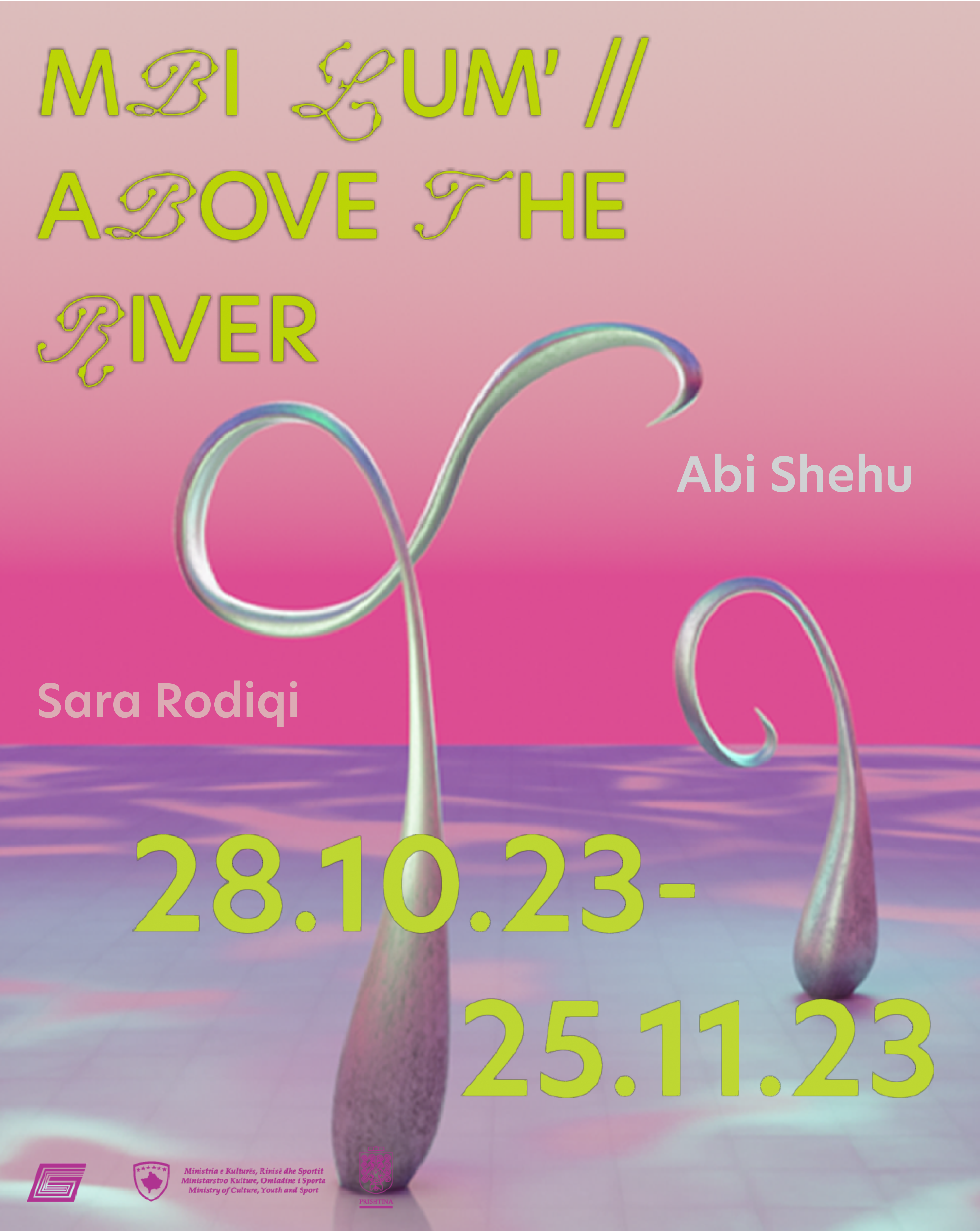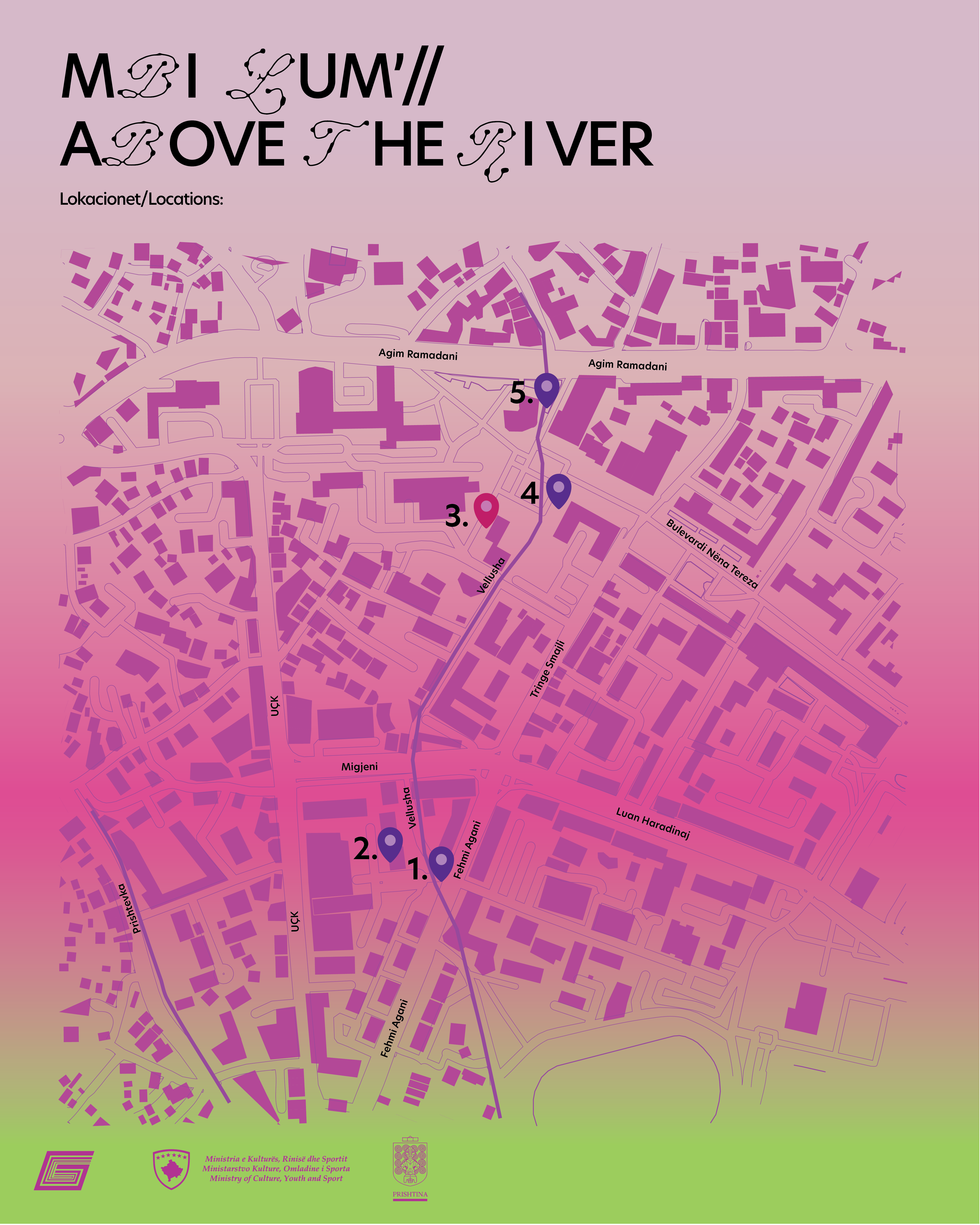Above the River
Until the end of the ’40s, the city of Prishtina stretched between two rivers once known as Vellusha and Prishtina (Prishtevka). In the ’50s, the river Vellusha, initially flowing from the hills of Gërmia, was covered through a system of pipelines. Later in the ’70s, the river Prishtevka, which flowed from the west part of the old city center, succumbed to the same fate. As a result of their coverage, the city’s rivers not only remained visually hidden but were transformed into garbage dumps, which caused a progressive biodegrading of their flora and fauna. Thus, in the ’80s, Prishtina became a city without a river. This paradoxical fact is an anchor point of the intervention considering the utter importance of rivers as a hydro-energy source.
“Above the River” is a public installation by artist Abi Shehu and architect Sara Rodiqi investigating the impact of actions that turned these rivers into sewage systems for the capital. The work traced down the bed of the Vellusha River through a sound installation and immersive metal sculptures. Relying on the expressive materiality of acoustics to produce a form of the aesthetic and sensorial awakening of the community, the work aims to restore the tonality of a flow that has been denied. The installation is a conceptual intervention that brings the underground above the surface and makes the bypassers gain a new awareness about the city through listening.
The river, as the city’s unconscious, symbolizes the repressed flows of a complex environment where the psycho-emotional reality of its inhabitants is constituted. Considering the denied existence of the river, the works create an acoustic map of its flow, thus achieving an aesthetic invigoration of the city’s social fabric. These structures are reminiscent of the forms of vegetal life that once blossomed along the course of the river Prishtina. Drawing from the studies of plants as art forms by the artist Karl Blossfeld, the sculptures resonate with nature as a source of aesthetic forms and that its destruction undermines the community’s relationship with beauty and life itself. Making the river once again imaginable through hearing, the installation stages a symptomatic return of the river in analogy with the return of the repressed impulses in the consciousness.

